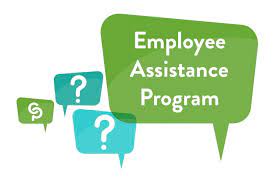Managing Employee Assistance Programs (EAPs) is an essential part of any organization’s human resource management strategy. An EAP is a workplace-based program designed to assist employees with personal or work-related problems that may impact their job performance, health, and well-being. As the importance of employee mental health and well-being continues to gain recognition, more and more companies are investing in EAPs to support their employees. In this blog, we will explore the key aspects of managing an EAP, including its benefits and best practices.
Contents
What Is Meant By Employee Assistance Program?
An Employee Assistance Program (EAP) is a workplace benefits program. This helps employees with personal or work-related problems that may impact their job performance, health, and well-being. EAPs typically offer confidential and short-term counseling, referrals to external resources, and other services that can assist employees with issues such as stress, anxiety, depression, substance abuse, marital or family problems, financial or legal issues, and other personal or work-related concerns.
Managing Employee Assistance Programs

The management of employee benefits programs involves several key steps to ensure that the program is effective, efficient, and meets the needs of employees and the organization. Some of the steps necessary for managing employee benefits programs include:
- Determine the scope and objectives of the program: Identify the types of benefits to be offered, the eligibility criteria, and the goals of the program.
- Conduct a needs assessment: Analyze the needs and preferences of employees, as well as benchmark the benefits offered by other organizations in the same industry or region.
- Develop a benefits package: Based on the needs assessment and organizational goals, design a benefits package that meets the needs of employees and aligns with the organization’s values and objectives.
- Communicate the benefits package: Communicate the benefits package to employees in a clear and concise manner, highlighting the value and relevance of each benefit.
- Manage enrollment and eligibility: Develop and implement processes to manage employee enrollment and eligibility for benefits, including communication and education about enrollment deadlines and eligibility criteria.
- Monitor and evaluate the program: Monitor the performance of the benefits program over time and make adjustments as needed to ensure that it is meeting the needs of employees and the organization.
- Ensure compliance: Eventually, ensure that the benefits program is compliant with legal and regulatory requirements, including employee benefits laws and regulations.
Overall, effective management of employee benefits programs requires a strategic approach that is focused on meeting the needs of employees and the organization. By following these key steps, organizations can ensure that their benefits program is effective and efficient and supports the well-being and productivity of their employees.
What Are The Main Aims Of Employee Assistance Programmes?

The main aims of Employee Assistance Programs (EAPs) are to provide employees with confidential and professional support for personal or work-related problems that may impact their job performance, health, and well-being. Some of the specific aims of EAPs include:
- Promoting employee well-being: EAPs aim to improve the mental and emotional well-being of employees, which can positively impact their job performance, productivity, and overall job satisfaction.
- Enhancing employee engagement and retention: EAPs can help employees feel more valued and supported by their employer, which can increase employee engagement and retention.
- Improving workplace productivity: By addressing personal and work-related issues, EAPs can help employees overcome obstacles that may be affecting their job performance and productivity.
- Reducing absenteeism and presenteeism: EAPs can help employees deal with personal and work-related issues before they escalate to a point where employees need to take time off work or come to work but are not fully productive.
- Supporting workplace safety: EAPs can provide resources and support to employees who may be dealing with substance abuse, mental health issues, or other personal or work-related problems that may affect workplace safety.
Overall, the main aims of EAPs are to support the well-being of employees and the productivity of the organization, ultimately leading to a more engaged, satisfied, and healthy workforce.
How Does The EAP Business Management Tool Help?
An EAP business management tool can help organizations effectively manage their Employee Assistance Programs (EAPs) by providing a centralized platform for managing program administration, monitoring program usage, and evaluating program effectiveness. Here are some ways in which an EAP business management tool can help:
- Streamlines program administration: An EAP business management tool can help organizations streamline the administration of their EAP by automating tasks such as employee enrollment, program billing, and vendor management.
- Provides real-time data and insights: An EAP business management tool can provide organizations with real-time data and insights into program usage, allowing them to track the effectiveness of the program and identify areas for improvement.
- Improves employee engagement: An EAP business management tool can help organizations improve employee engagement with the program by providing easy access to program resources and support services.
- Enhances program accessibility: An EAP business management tool can provide employees with easy access to program resources and support services, such as counseling services, wellness programs, and legal assistance.
- Helps ensure compliance: An EAP business management tool can help organizations ensure compliance with legal and regulatory requirements related to EAP administration and employee benefits.
Overall, an EAP business management tool can help organizations effectively manage their EAPs and provide employees with the support they need to maintain their mental and emotional well-being, ultimately leading to a more engaged, productive, and healthy workforce.
Examples For Managing Employee AssistancePrograms?
Here are some examples of employee assistance services that may be offered through an EAP:
- Counseling services: EAPs may offer confidential counseling services to employees and their family members for issues such as stress, anxiety, depression, substance abuse, and marital or family problems.
- Financial counseling: EAPs may provide financial counseling to help employees manage their finances, create budgets, and plan for the future.
- Legal assistance: EAPs may offer legal assistance to employees for issues such as landlord-tenant disputes, family law matters, and consumer issues.
- Health and wellness programs: EAPs may provide health and wellness programs to employees to promote healthy lifestyle habits, such as nutrition, exercise, and stress management.
- Work-life balance resources: EAPs may offer resources and support to help employees manage their work-life balance, such as child and elder care resources, parenting resources, and flexible work arrangements.
- Crisis support: EAPs may offer crisis support services to employees and their families in the event of a traumatic event, such as a natural disaster or workplace violence incident.
Overall, EAPs can offer a range of services to support employees’ mental, emotional, and physical well-being, and to help them overcome challenges that may impact their job performance and overall quality of life.
Conclusion
In conclusion, Employee Assistance Programs (EAPs) are an important part of an organization’s human resources strategy. EAPs provide employees with confidential and professional support for personal or work-related problems that may impact their job performance, health, and well-being. Effective management of an EAP can lead to a more engaged, satisfied, and healthy workforce, which can ultimately benefit both the employees and the organization as a whole. By investing in EAPs and managing them effectively, organizations can create a workplace culture that values employee well-being and productivity.
Employee wellness programs are the key to improving employee motivation, productivity, and retention. At MantraCare, we have a team of health experts, counselors, and coaches who serve corporate employees with 10+ wellbeing programs including EAP, Employee Diabetes Reversal, Corporate MSK, Employee Fitness, Corporate Yoga, and Employee meditation.
